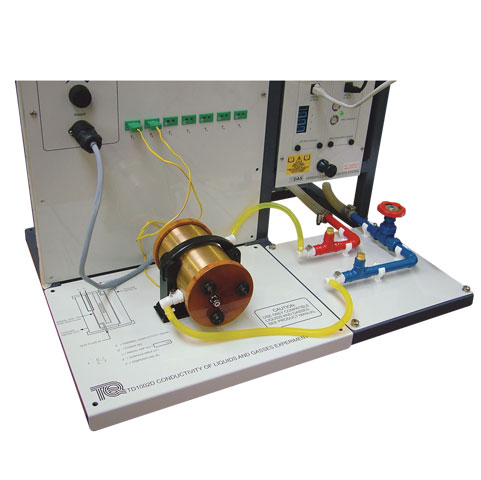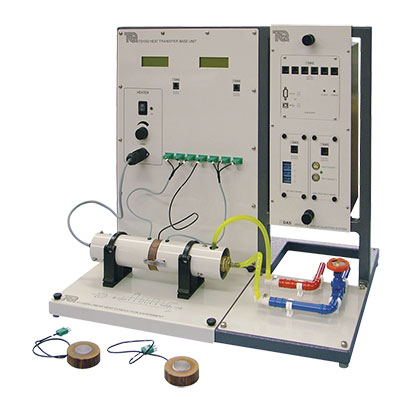Description
An experimental module to show the thermal conductivity of various compatible liquids and gasses.
This experiment has three concentric cylinders. The inner cylinder contains an electric heater (the heat source). The test liquid or gas forms a second, thin cylinder around the heat source. The third cylinder cooled by water surrounds them both to make a heat sink. The whole assembly is mounted on a base plate with a clear schematic of the experiment layout.
Heat passes by conduction from the heat source, through the test liquid or gas, to the heat sink. Thermocouples measure the temperature on the inside and outside edges of the cylinder of test liquid or gas.
The electric heater and thermocouples connect to sockets on the Heat Transfer experiments base unit, which also supplies the cold water feed and drain for the heat sink Caps of thermally-insulating material at the ends of the cylinders reduce heat loss, but students do an initial experiment to calibrate the equipment to allow for heat losses and improve experiment accuracy. One end cap is removable to allow the unit to be easily cleaned when changing from one fluid to another.
Students turn on the cooling water and the heater and measure the temperatures at each side of the test gas or liquid. They then compare their results with those predicted from theory for conduction in liquids and gasses.
Key features:
- One of four optional experiments for the Heat Transfer Experiments base unit (TD1002)
- Fits quickly and easily onto the Heat Transfer Experiments base unit and water connections have self-sealing quick connectors – needs no tools
- Allows students to measure the thermal conductivity of various compatible liquids and gasses
- Clear schematic printed on the baseplate aids student understanding
- Easy to disassemble and clean
- Safe, low-voltage heater with over-temperature cut-out





